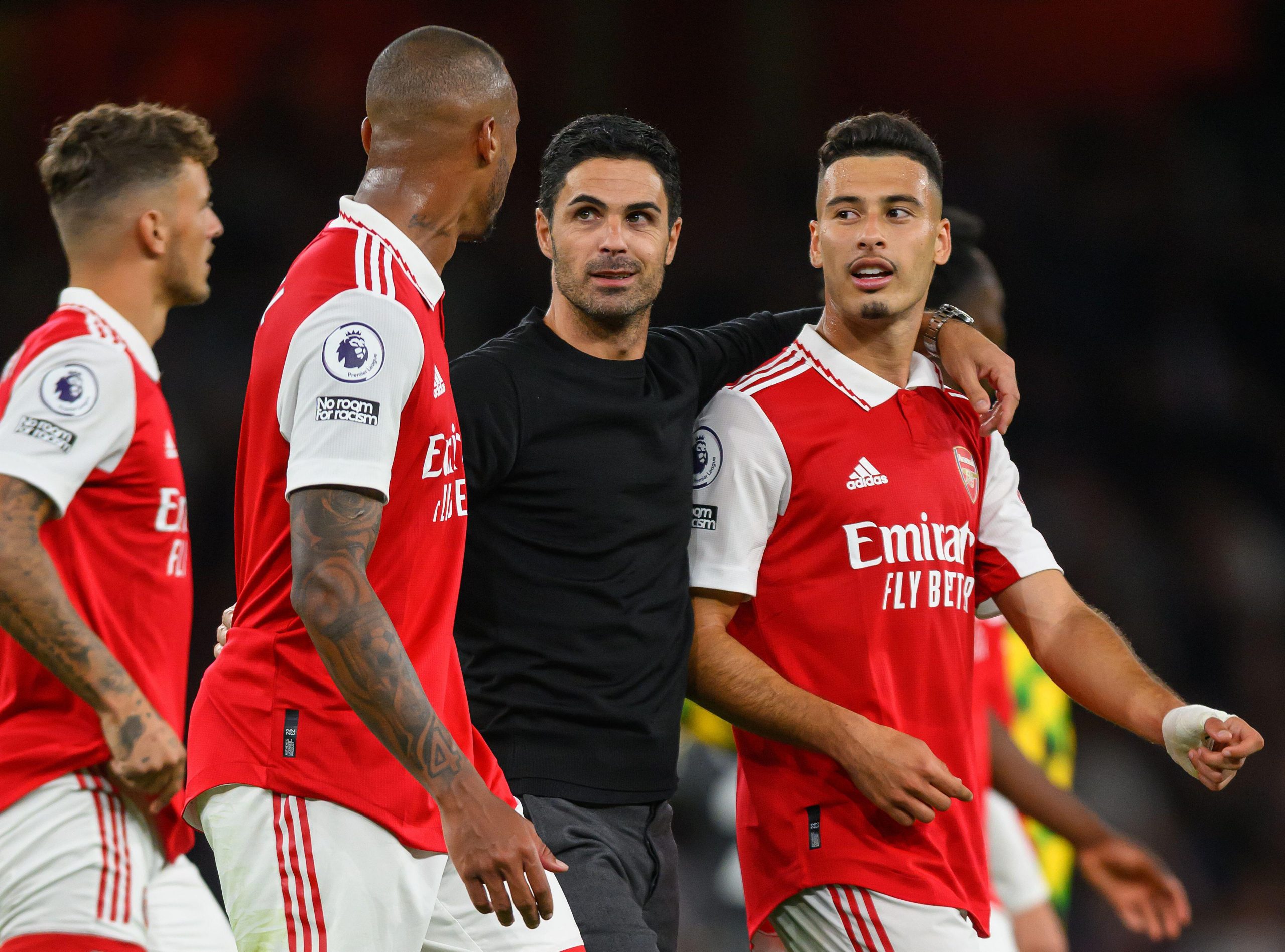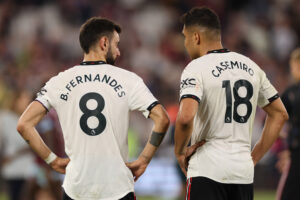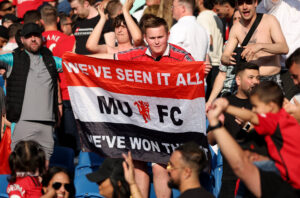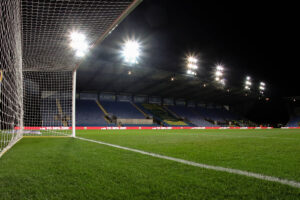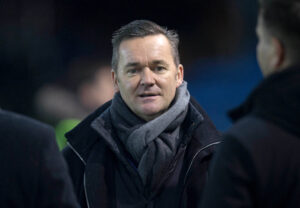Adding the word ‘ball’ to a manager’s name, à la ‘Sarriball’ or ‘Bielsaball’, as a way of summarising their footballing philosophy, has become one of the great clichés of modern football. Indeed, it is not limited to football, as the new England cricket coach, Brendon McCullum, has bristled at the use of ‘BazBall‘ (‘Baz’ being McCullum’s nickname) to describe his attacking tactics. Nevertheless, the term has some limited use, as a kind of shorthand for a particular managerial approach. Consequently, it is not unreasonable to start thinking about ‘Artetaball’ and how it might just be similar to one of the finest footballing philosophies ever created: ‘Wengerball’.
Artetaball Giving Fond Memories of Wengerball for Arsenal Fans
Mikel Arteta has now won as many Premier League Manager of the Month awards as Antonio Conte:
◎ 2021 September
◎ 2022 March
◉ 2022 AugustThe first time an Arsenal manager has won the August award since 2004.#PLAwards pic.twitter.com/UrTmIuohdi
— Squawka (@Squawka) September 16, 2022
The Biggest Thing About Arteta’s Arsenal is its Bigness
The biggest thing about Mikel Arteta’s Arsenal side, which was evident again at Brentford in their comprehensive 3-0 victory on Sunday, is its bigness. And that is bigness in every sense: height; power; strength of character; and even size of the squad. As Arteta approaches the third anniversary of his taking charge at the Emirates, it is finally becoming evident that he is assembling a large and powerful squad that includes some particularly large and powerful players, especially in the key positions of centre-back and central midfield.
Before the match at Brentford, where Arsenal lost so poorly at the start of last season, many Gunners fans were understandably nervous about facing Ivan Toney, the superbly combative and gifted striker who has just been elevated to the England squad. Toney is exactly the kind of tall, powerful centre-forward that has so often bullied Arsenal teams over the last decade or more, from Nikola Žigić (the lumbering Serbian who was so instrumental in Birmingham City’s 2011 League Cup final win against Arsenal) to, more recently, Troy Deeney. The fear among Gunners fans was that, with Toney determined to prove that he deserved a chance to go to Qatar, he might go to town on the Arsenal defence, just as he had against Manchester United and Leeds United earlier this season.
Read More: How Mikel Arteta Transformed Granit Xhaka at Arsenal
However, almost as soon as the match started, it was obvious that Toney, for all his undoubted natural attributes, would simply be unable to push this Arsenal team around, particularly in central defence and central midfield. In William Saliba, Gabriel and Thomas Partey, Arsenal had a trio of taller, even more powerful centre-backs and central midfielders who could first match him physically and then outplay him afterwards.
For older Arsenal fans (and even younger ones who have caught up on YouTube), this trio of physical and footballing titans at the heart of the team evoked fond memories of the great centre-backs and central midfielders who were the basis of Arsène Wenger’s best (i.e. earliest) Arsenal sides: Tony Adams; Steve Bould; Sol Campbell; Patrick Vieira; Emmanuel Petit; Gilberto Silva; et al. These were players who would never be physically intimidated by an opponent but who could also outplay them.
What Was Wengerball and Why Did Wenger Abandon It?
It was this combination of physical power and terrific technique that was at the heart of Wengerball, as it was initially conceived of and executed by the great Frenchman at the end of the last century. Like all the best teams, Wenger’s great Arsenal sides were capable of defeating almost any opponent in one of two ways: either by playing them off the park, or, if necessary, by fighting them off the park.
It is sometimes forgotten now that even Wenger’s most beautiful sides, such as the 2004 Invincibles, were collections of physically impressive specimens. Although there was always room for more diminutive players, such as the wingers Robert Pires and Freddie Ljungberg, the bulk of the side was over six feet tall. When Campbell, Vieira, Henry or even Dennis Bergkamp confronted an opponent, and especially if they did so collectively, there was absolutely no chance of them simply being swatted aside.
Read More: Granit Xhaka Was Never Close to Arsenal Exit
Arguably the biggest question to be asked about the Wenger era and especially its long, slow end is why Wenger ever abandoned Wengerball, whereby he identified and deployed technically great players who were also physically impressive. Perhaps Wenger never planned to. If Abou Diaby had not effectively had his career ended by Sunderland’s Dan Smith at the end of the 2005/06 season, he might just have emerged as the natural successor to Patrick Vieira. Instead, Diaby almost literally limped on for a few more largely ineffective seasons, and instead, Wenger turned to smaller, nimbler midfielders, such as Cesc Fabregas, Mathieu Flamini, Tomas Rosicky and Alexander Hleb (the famous ‘Four Dwarves’ midfield).
Perhaps Wenger also made the mistake of being distracted by another manager’s theory, namely the tiki-taka type of fast-passing football that Pep Guardiola pioneered at Barcelona, with the genius combination of Xavi and Iniesta. But whatever the reason, after his first ten years in charge at Arsenal, Wenger effectively abandoned his own brand of football, dabbled with other types, and was never nearly as successful again.
Is Artetaball a Revival Attempt?
What is most significant about Artetaball – i.e. Mikel Arteta’s own emerging philosophy of football – is how much it resembles the original and highly successful Wengerball. Arteta seems to have learned both from Wenger’s last, largely unsuccessful decade in charge and from his own experiences at Arsenal over the last two and a half Covid-ravaged seasons that he needs a big team and squad in every sense, consisting of tall, powerful players who are also technically gifted. And if Saliba, Partey and Gabriel Jesus still have a long way to go before they can genuinely be compared to Campbell, Vieira and Henry, then at the very least Arsenal finally look, for the first time in ages, as if they have a genuine spine to the team, with big, powerful players in the three key positions of centre-back, central defensive midfield and centre-forward.
"If you want to get better, you have to be self critical"
Mikel Arteta says humility was important in improving both himself as a coach and Arsenal's fortunes on the pitch. pic.twitter.com/EGGOpkhtfk
— Sky Sports News (@SkySportsNews) September 17, 2022
The major reservations about Arteta and Artetaball, which were highlighted again in Arsenal’s defeat at Old Trafford, remain. For all that he is assembling impressive collections of young forwards (Jesus, Martinelli, Saka, Ødegaard, Smith Rowe and the new Vieira) and young centre-backs (Gabriel, Saliba, Ben White and possibly also Takehiro Tomiyasu, if the Japanese full-back can show the versatility Arteta has claimed for him), Arsenal’s central midfield remains comparatively weak.
Ian Wright and others have rightly rhapsodised about Granit Xhaka at Brentford, but the Swiss can only play his more advanced role successfully if the taller, more powerful and more defensively-minded Thomas Partey is behind him. Put simply, Partey is key to Arsenal’s midfield. Equally, Arteta himself must cut out the catastrophic coaching or managerial cock-ups, such as the triple substitution at Old Trafford that effectively cost his side any chance of getting back into the game, that he has too often made in the past.
Nevertheless, for the first time in over a decade, Arsenal are finally looking not just like a big club but a big team, one that will no longer simply be pushed around by taller, more powerful opponents. It is only the start, of course, but there is at least a chance that Artetaball will come to be regarded as Wengerball Mark II. And if it can be half as successful as the original Wengerball, that will be enough for most Arsenal fans.


